You can listen to Hoosier History Live! live on the air each Saturday, or listen online at the WICR website during the broadcast on any computer with speakers, anywhere, or on a smartphone. We invite you to visit our website!
March 26 show
Victorian-era women: behind closed doors
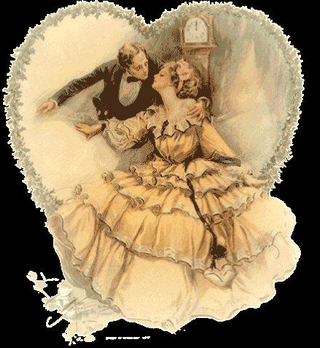 When the spotlight shines on Victorian-era women during Women's History Month, they typically are depicted as repressed, prim and obsessed with "proper" social behavior. The most famous Hoosier suffragette, educator and civic leader May right Sewall, caused a stir in the late 1800s by insisting that her ndianapolis Classical School for Girls include a gymnasium. (Physical education was not considered "proper" for girls.) Mrs. Sewall also wore her skirts at ankle length, a shocker in an era when women's dresses swept the ground.
When the spotlight shines on Victorian-era women during Women's History Month, they typically are depicted as repressed, prim and obsessed with "proper" social behavior. The most famous Hoosier suffragette, educator and civic leader May right Sewall, caused a stir in the late 1800s by insisting that her ndianapolis Classical School for Girls include a gymnasium. (Physical education was not considered "proper" for girls.) Mrs. Sewall also wore her skirts at ankle length, a shocker in an era when women's dresses swept the ground.
Indeed, says Karen Lystra, there was a fixation during the Victorian era (1837-1901) with displaying "proper" behavior in public. In private, though, the Victorians were anything but prudish, enjoyed a bawdy sense of humor and have been inaccurately stereotyped for generations, Karen says.
A professor of American studies at California State University, Karen Lystra has been spending most of her time in Indianapolis in recent years and has tracked down, read and analyzed thousands of letters and diaries written during the Victorian era.
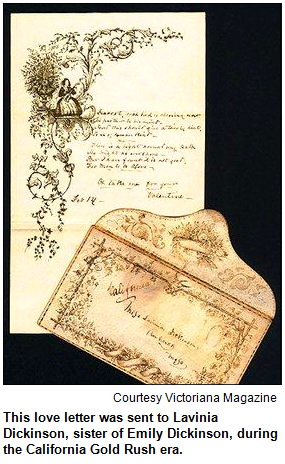 She says wildly misleading folklore about Victorians emanates from a few incidents that robably never happened, including Queen Victoria's supposed advice to her granddaughter about her wedding night: "Lie still and think of the Empire." (In fact, Karen says, Queen Victoria's recollections of her own wedding night are joyful and, ahem, uninhibited.)
She says wildly misleading folklore about Victorians emanates from a few incidents that robably never happened, including Queen Victoria's supposed advice to her granddaughter about her wedding night: "Lie still and think of the Empire." (In fact, Karen says, Queen Victoria's recollections of her own wedding night are joyful and, ahem, uninhibited.)
Rather than succumbing to loveless marriages as per stereotypes, Victorian-era people pioneered the concept of love as a basis for marriage, breaking from previous generations who placed sharp restrictions on who could wed whom, Karen says.
"Victorians didn’t invent love, of course, but they were revolutionary in the concept of love as a basis for marriage," she notes. "This also sets up divorce, because when you base marriage on feelings, you set up expectations."
Karen, the author of Searching the Heart: Women, Men and Romantic Love in Nineteenth Century America (Oxford University Press), is tracking down letters written by working-class Hoosiers during the Victorian era; she welcomes tips and may be contacted at klystra@fullerton.edu.
 Meanwhile, Karen has been giving fascinating presentations around Indy - including to the Hoosier Chapter, Victorian Society of America - as she explains who created the myths about our Victorian ancestors and why they differed so much in private from their "proper" public personas.
Meanwhile, Karen has been giving fascinating presentations around Indy - including to the Hoosier Chapter, Victorian Society of America - as she explains who created the myths about our Victorian ancestors and why they differed so much in private from their "proper" public personas.
Among the Victorian-era letters Karen has uncovered is a note written during the Civil War by future Indiana Supreme Court Justice John V. Hadley (1840-1915), a native of Hendricks County, to his secret fiancé. The missive, written in 1863, includes this passage:
"It was Sunday night when you wrote your last. And you say that you wished me there. Thanks for the honor you do me. And Heavens how my heart fluttered in responding Amen to your wish. ... 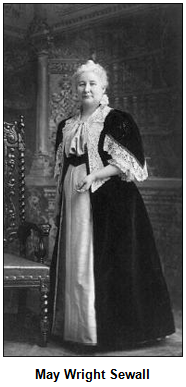 Oh how I did wish it were mine to step to your back and ... to have touched you gently on the shoulder and exclaimed 'I am here.' The ecstasy of the moment I believe would have been fully felt with grasping hands and touching lips. ... But such a time is coming Dear Mary, And we'll sit on the sofa. We'll draw nigh unto each other, we'll talk, we'll love."
Oh how I did wish it were mine to step to your back and ... to have touched you gently on the shoulder and exclaimed 'I am here.' The ecstasy of the moment I believe would have been fully felt with grasping hands and touching lips. ... But such a time is coming Dear Mary, And we'll sit on the sofa. We'll draw nigh unto each other, we'll talk, we'll love."
Other letters written during the Victorian era by women to their lovers and husbands (or to their close friends and relatives, describing their passion for their lovers) are even steamier. Although Victorian-era women did not talk about sex in public because of the emphasis on "proper" appearances, Karen says they discussed it frankly in private.
During our show, she will explain who created and perpetuated the inaccurate stereotypes of Victorians that persist to this day. Namely, that they were repressed; their marriages were loveless; courtship was chaperoned, and women were "raised to be passionless and men to seek fun and sexual release with prostitutes."
In fact, Karen says, Victorian-era courtships were not chaperoned after a certain stage in the relationship; courtships and marriages were full of erotic passion and romantic love.
Join us as we visit Victorian-era parlors and even sneak upstairs, all in the quest of accurate history.
Roadtripper: The Gospel According to James
Chris Gahl of the ICVA will suggest that we take the Roadtrip to the Indiana Repertory Theatre in downtown Indianapolis to see a play that explores one of the darkest episodes of our state's history, the infamous double lynching of two young black men by an angry mob in Marion, Indiana, on Aug. 7, 1930. Three young black men had been accused of murdering a white man, Claude Deeter, and of raping his female companion, Mary Ball, who had been parked along a lover's lane. 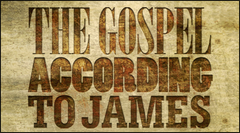 The three accused were pulled from the jail the next evening by an angry mob. Two of the men were lynched, and the youngest of the three, James Cameron, was spared at the last minute by the crowd.
The three accused were pulled from the jail the next evening by an angry mob. Two of the men were lynched, and the youngest of the three, James Cameron, was spared at the last minute by the crowd.
The Gospel According to James features two-time Tony-nominated actor André De Shields (The Full Monty and Play On!). The play focuses on an imagined meeting in 1980 between James Cameron and Mary Ball.
The Marion lynching was made famous by the iconic Lawrence Beitler black-and-white photograph of the incident. 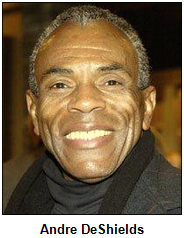 Beitler was in fact a professional photographer in Marion who spent the next 10 days reproducing copies of his photograph, which he sold as souvenirs for 50 cents. Horrifically, lynching photos at the time were often made into postcards as novelty items.
Beitler was in fact a professional photographer in Marion who spent the next 10 days reproducing copies of his photograph, which he sold as souvenirs for 50 cents. Horrifically, lynching photos at the time were often made into postcards as novelty items.
Indiana University historian James Madison, considered an authority on the Marion event and author of A Lynching in the Heartland (Palgrave McMillan, 2001), said in a 2010 NPR story, "We know that three young black men were at the scene of the crime. We know there was also a young white woman at the scene of the crime. Who pulled the trigger, who shot Claude Deeter, is not known. And I don't think really can be known."
You can listen to the NPR story here (contains graphic language and images). The IRT production runs through Sunday, April 10.
History Mystery question
On her wedding day to Prince Albert in 1840, Queen Victoria did something that eventually became a tradition for brides across America, including Indiana. It took many decades, however, for the tradition to firmly take hold for some brides in this country.
Question: What did Queen Victoria do on her wedding day that has become a tradition?
To win the prize, you must call in with the correct answer during the live show. The call-in number is (317) 788-3314, and please do not call until you hear Nelson pose the question on the air. Please do not call if you have won a prize from any WICR show during the last two months.
The prize is four tickets to the Indiana Wine Fair in Brown County on April 30, courtesy of the Indiana Wine Fair.
Your Hoosier History Live! team,
Nelson Price, host and creative director
Molly Head, producer, (317) 927-9101
Chris Gahl, Roadtripper
Richard Sullivan, webmaster and tech director
Pam Fraizer, graphic designer
Garry Chilluffo, creative consultant
Michele Goodrich, grants consultant
www.hoosierhistorylive.org




Please tell our sponsors that you appreciate their support: Indiana Historical Society, Indiana Humanities Council, Lucas Oil and Story Inn.
 Acknowledgments to Print Resources, Indianapolis Marion County Public Library, Monomedia, Indiana Humanities Council, Indianapolis Convention & Visitors Association, WICR-FM, Fraizer Designs, Chelsea Niccum and many other individuals and organizations. We are an independently produced program and are self-supporting through organizational sponsorships, grants and through individual tax-deductible contributions through the Indiana Humanities Council. Visit our website to learn how you can support us financially.
Acknowledgments to Print Resources, Indianapolis Marion County Public Library, Monomedia, Indiana Humanities Council, Indianapolis Convention & Visitors Association, WICR-FM, Fraizer Designs, Chelsea Niccum and many other individuals and organizations. We are an independently produced program and are self-supporting through organizational sponsorships, grants and through individual tax-deductible contributions through the Indiana Humanities Council. Visit our website to learn how you can support us financially.
April 2 show
James Alexander Thom and Dark Rain on historical fiction
Acclaimed far and wide for the depth of his historic research - his novels have sold more than 2 million copies around the world - James Alexander Thom is the best-known author currently living on Indiana soil. Not only will Nelson be visited by this legendary Hoosier, who prefers to be called "Jim" (what would you expect from a nature lover who lives in a 19th-century log cabin that he moved and reconstructed himself on a ridge near a forest in Owen County?), they also will be joined by Jim's wife, Dark Rain Thom, a Shawnee elder, tribal historian and fellow author.
 Jim, whose novels have included Follow the River, which hit the New York Times bestseller list in 1981, and Panther in the Sky (1989) - about the great Shawnee leader Tecumseh, will share insights and challenges about writing historical fiction. The Indiana Magazine of History calls him a "master of the form" in a review of Jim's newest book, The Art and Craft of Writing Historical Fiction (Writer's Digest Books).
Jim, whose novels have included Follow the River, which hit the New York Times bestseller list in 1981, and Panther in the Sky (1989) - about the great Shawnee leader Tecumseh, will share insights and challenges about writing historical fiction. The Indiana Magazine of History calls him a "master of the form" in a review of Jim's newest book, The Art and Craft of Writing Historical Fiction (Writer's Digest Books).
Dark Rain, who served on the Lewis and Clark Bicentennial Planning Council, and Jim also are the co-authors of Warrior Woman (2004), a novelistic portrait of a real-life, female Shawnee leader of the 1770s.
During what is guaranteed to be a memorable show, Nelson will talk to the husband-and-wife team about myths concerning the Shawnee, as well as their historic home. A native of Owen County, Jim did much of the reconstruction work himself on the cabin, reassembling it log by log, using material from the 1800s, and sleeping in a tent during the process. (During that stretch, he wrote at night by kerosene light.)
Jim’s other bestsellers have included Long Knife (1979), about the exploits of George Rogers Clark during the Revolutionary War, and Sign-Talker (2000), which focuses on a French-Shawnee scout who provided invaluable assistance to Lewis and Clark.
In addition, Dark Rain is the author of Kohkumthena's Grandchildren (1994), a history of the Shawnee. Not only are the Thom's admirers legion, we can't resist noting Jim won the inaugural Indiana Authors Award in 2009, given by the Indianapolis-Marion County Public Library Foundation.
© 2011 Hoosier History Live! All rights reserved.